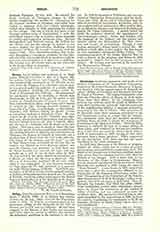

Senanque, Cistercian monastery and cradle of the modern Cistercians of the Immaculate Conception, situated on the rivulet Senancole, Diocese of Avignon, was founded, with the concurrence of St. Bernard, by Alf ant, Bishop of Cavaillon, and Raymond Berenger II, Count of Provence. The original community came from the Cistercian abbey of Mazan, in 1148, under Peter, their first abbot. In the beginning their poverty was extreme, until the Lords of Simiane became their benefactors, and built, with the assistance of the neighboring nobility, a spacious monastery, according to the rule of Meaux. The attraction of St. Bernard’s name drew numerous postulants to the new foundation, so that in a short time the community numbered more than one hundred members, enabling them, in 1152, to found the monastery of Chambons, in the Diocese of Viviers. Little by little, however, it suffered the fate of so many abbeys of those times, and weakened in fervor and numbers; after it had been governed by thirty regular abbots, it fell in commendam in 1509; having, at that time, not more than a dozen members. When suppressed by the Revolution, 1791, there was but one monk remaining of the whole community.
In 1854 Abbe Barnouin, of the Diocese of Avignon, bought the abbey, which was in a state of perfect preservation, and established a community there. The object of the founder was to institute a medium regime more severe than the common, but less strict than the Reform of La Trappe. After a short time in the Novitiate of Sta. Croce in Gerusalemme (Rome), having obtained approbation for his monastery, Abbe Barnouin was professed in 1857, taking the name of “Mary Bernard”. A new decree, in 1867, erected the house into a particular congregation affiliated to the Cistercians of the Common Observance, under the title “Congregation of the Cistercians of the Immaculate Conception of N. D. de Senanque”, with a vicar-general, elected for six years, at their head. Dom M. Bernard, the founder, first filled this office (1868). After establishing several other subordinate monasteries, he began the restoration of the celebrated Abbey of Lerins, and was authorized to make his residence there. His successors followed him in this, until compelled by the persecutions of 1902, to leave the country, transferring the community to N. D. du Suffrage, Province of Lerida, Spain, where they are now established.
EDMOND M. OBRECHT

